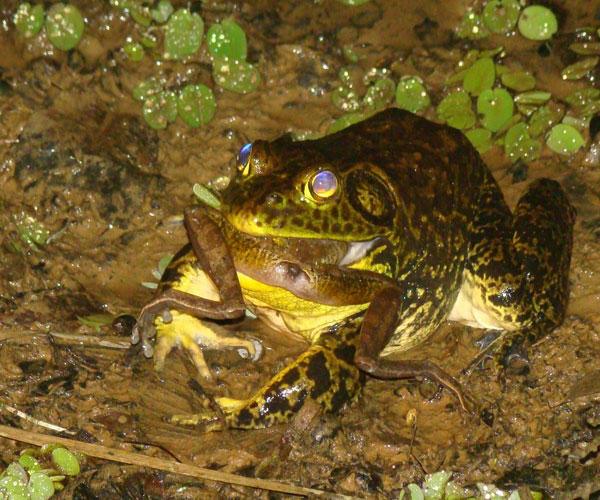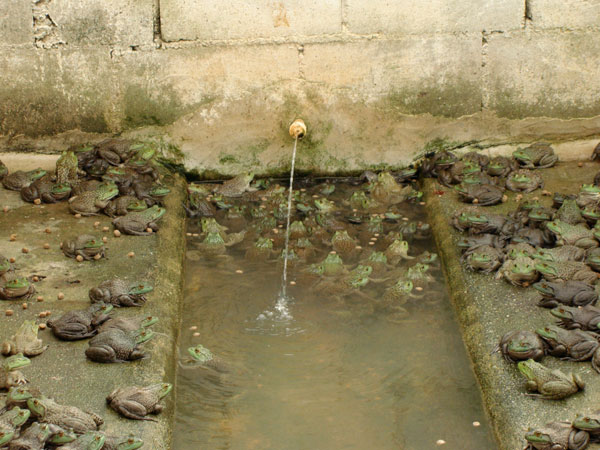Live Bullfrog Trade Implicated in Amphibian-Killing Disease

Bullfrogs, often shipped live between continents to be eaten, are spreading the deadly chytrid fungus that is threatening amphibians worldwide, new research indicates.
A team of researchers collected bullfrogs on sale at Asian food stores in seven cities in the United States and found 41 percent of the frogs were infected with the fungus.
The chytrid fungus is harmless to people, but it has caused species declines and even extinctions among amphibians. However, it is not fatal to all amphibians. The fungus doesn't kill the North American bullfrog, the type of frog sampled in this study, making this species an excellent carrier.
Frogs in these U.S. shops are imported live primarily from farms in Taiwan, Brazil and Ecuador. In the United States, the live frogs are then sold for their legs.
The team also looked for fungus at frog farms in Brazil and among several native frog species from Brazil's Atlantic Forest, one of the most amphibian-rich regions in the world.
Their work revealed four new strains of chytrid, also known as Batrachochytrium dendrobatidis or Bd. One of these was found on a bullfrog in southeastern Michigan. This frog appeared to have come from a farm in the Atlantic Forest region, where sampling from native frogs revealed that the four strains are common.
By comparing these strains with those described from studies in Japan, the team found Brazilian chytrid had made its way to Japan.
Get the world’s most fascinating discoveries delivered straight to your inbox.
The Brazilian chytrid probably first infected native frogs in Brazil, spread to farms, and from there, around the world, the researchers say. [7 Devastating Infectious Diseases]
The trade in frogs has probably led to the global spread of the disease, said study researcher Timothy James, a University of Michigan evolutionary biologist.
"A lot of the movement of this fungus is related to the live food trade, which is something we should probably stop doing," James said in a statement. "We don’t need to have millions of live frogs being shipped from foreign countries into the United States."
The research was detailed online July 31 in the journal Molecular Ecology.
Follow LiveScience on Twitter @livescience. We're also on Facebook & Google+.




